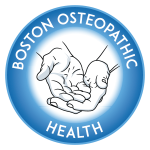Common FAQs
You can find the answers to some of the most frequently asked questions below. If you would like more information, please call us at 617-431-4451.
What is an Osteopathic Physician and what type of training do they receive?
DOs are fully licensed in all 50 states to practice the full spectrum of Medical and Surgical specialties. Their training includes the completion of 4 years of Osteopathic medical school, covering the same standard training in the basic sciences and clinical medicine as is found in an MD medical education program. In addition, DO medical students complete another 500 hours of training and study in anatomy and manual medicine.
Successful completion of this curriculum leads to a Doctor of Osteopathy degree (D.O.). After medical school, the DO can pursue Internship and Residency training in any of the medical or surgical specialties.
What conditions can Osteopathic manipulative medicine treat?
Osteopathic care addresses the full spectrum of a patient’s Healthcare concerns. This means that OMM is intended to be used as an integral part of the Osteopathic physician’s treatment program in the management of any Healthcare issue. These may include chronic ear infections, Irritable Bowel Disease, high blood pressure, headaches, depression, Carpal Tunnel Syndrome, asthma and all issues related to care of pregnant women and newborns.
OMM can often play a significant role in helping a patient to achieve their optimal state of healing. In many situations, OMM is an important factor in a patient’s healing process. Sometimes, it is “the” crucial intervention necessary for Healing.
Who can benefit from OMT and Cranial Osteopathy?
Problems may begin with birth itself, often our first trauma, as the infant’s skull pushes against the birth canal. Some methods use to ease a difficult birth (forceps, vacuum extraction, and anesthesia), although necessary, may add to the trauma. Infants with cranial distortions may present with such problems as infantile colic, inability to suck or swallow, frequent spitting up, chronic ear infections, or even delayed development. Some problems, such as learning disabilities, may not surface until a later date.
Remember, life’s physical and emotional traumas can alter or hinder function at any age, often producing significant effects upon a person’s health. This can cause a wide variety of problems, including low back pain, headaches, joint pain, and repetitive stress syndromes such as tendonitis. The effects of trauma are not limited to the musculoskeletal system. Respiratory, digestive, menstrual and other systemic disorders may also result from traumatic influences. When indicated, osteopathic treatment may provide significant relief.
How long does it take to see results?
Are DOs and MDs the same?
Doctors of Osteopathy receive additional education in the principles and practice of osteopathy as part of their basic medical education. Those doctors who utilize Cranial Osteopathy have many hours of additional training in the various functions of the cranium and primary respiration, and their relationship to all other parts of the body. This specialized training allows the osteopathic physician to diagnose and treat disorders and diseases in ways that are unique to the osteopathic profession.
Are DOs the only cranial practioners?
Only a physician (DO/MD), dentist(DDS/DMD) or qualified international DO/MD is eligible to receive training in the osteopathic cranial concept and become a member of The Cranial Academy.
Does OMT work?
In addition, The New England Journal of Medicine published a study in November 1999. In the study, researchers looked at how well OMT works to treat low-back pain. Patients were divided into two groups. One group got standard treatments, such as hot and cold packs, physical therapy, and drugs. The other group received standard care plus OMT. Twelve weeks later, patients in both groups felt better. But those in the OMT group used less medication and less physical therapy. That meant they had fewer side effects and lower health care costs.
